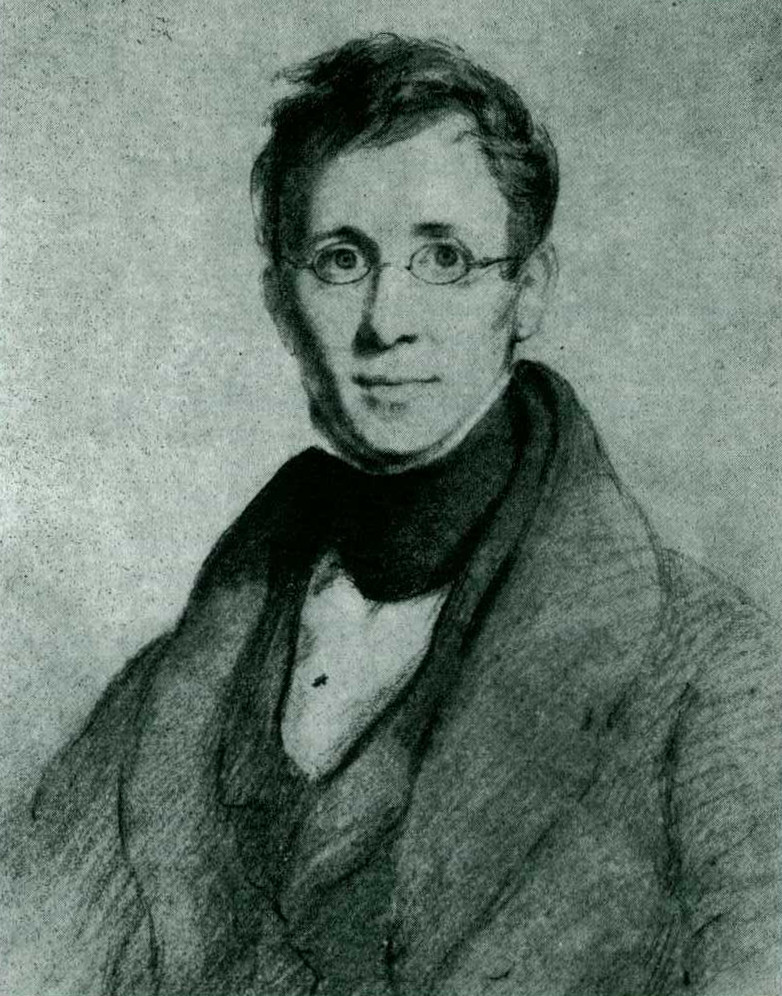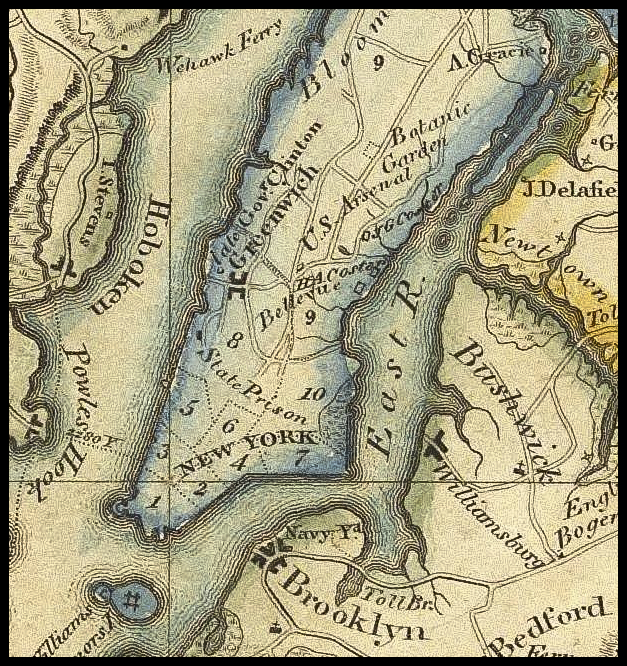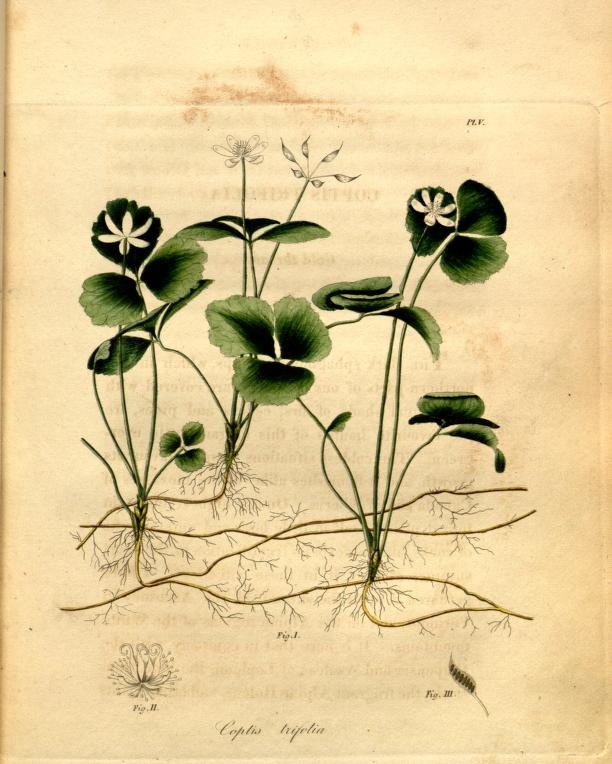John Torrey’s Calendarium Florae for the Vicinity of New York (1818, 1819 & 1820)
 |
| Crayon drawing of John Torrey by Sir Daniel Macnee. From the collection of Sir William Hooker, Royal Botanic Gardens at Kew, England. |
John Torrey (1796-1873) was a preeminent early American botanist. From 1818-1820, Torrey kept a careful record of the plants that he encountered in and around New York City and called his work Calendarium Florae for the Vicinity of New York. The Mertz Library at The New York Botanical Garden is the proud owner of this remarkable manuscript, which was recently digitized and added to the Biodiversity Heritage Library. The image below depicts a full page spread from the Calendarium, showing Torreys neatly written and methodically arranged list of plants.
 |
| Torrey, John. Calendarium Florae for the Vicinity of New York. Digitized by the LuEsther T. Mertz Library, New York Botanical Garden. |
The map below shows many of the locations noted in the Calendarium, including Greenwich (now Greenwich Village), the Elgin Botanic Garden (now Rockefeller Center), Bloomingdale (now the Upper West Side of Manhattan), and Hoboken, New Jersey. The map dates from 1811, shortly before Torrey started work on the Calendarium, and helps us visualize the region where Torrey lived and conducted his early studies.
 |
| Eddy, John H. Map of the Country Thirty Miles Round the City of New York. David Rumsey Historical Map Collection. http://www.davidrumsey.com/luna/servlet/s/h1o9di. |
Torrey’s Calendarium is what today is called a phenological record; a document registering the name of an organism and the date of some biological phenomenon. Torrey’s Calendarium lists the plants by scientific name, date of first bloom, and the locations for several hundred species; in this case plants observed around the New York archipelago, from the salt marshes of Brooklyn to the cedar swamps of New Jersey. On his travels through the City, Torrey detailed the common plants of roads, gardens, and woodlots of lower Manhattan, including the stagnant waters around Greenwich, the swamp flora behind the Elgin Botanic Garden, and the wildflowers of Bloomingdale woods. Through his eyes and through his pen, we are witness to the last generation of Rock Harlequin, Tall Thimbleweed, Tuckahoe, Pinweed, Slender Rose Gentian, Smooth Yellow False Foxglove and many others plants soon to be extirpated from the island of Manhattan, as the hills were leveled and the rubble used to fill the swamps. Some species, like Sphagnum Moss, Sundew, and Three-leaf Goldthread (shown in the images below), were eradicated entirely from the boundaries of the City, and, due to a warming climate, are difficult to grow today even under cultivation.
 |
| Coptis trifolia or Three-leaf Goldenthread observed by John Torrey. Calendarium Florae for the Vicinity of New York by John Torrey. Digitized by The New York Botanical Garden. |
 |
| Coptis trifolia or Three-leaf Goldenthread from American Medical Botany: Being a Collection of the Native Medicinal Plants of the United States by Jacob Bigelow. v.1. 1817. p.60. Digitized by Missouri Botanical Garden. http://biodiversitylibrary.org/page/2955644. |
In the year 1818, the first year in which observations were recorded in the Calendarium, John Torrey, only 22 years of age, graduated with a degree in medicine from Columbia College of Physicians and Surgeons. During this time, he was also helping to found the Lyceum of Natural History in New York (the forerunner of the New York Academy of Sciences), and published several important articles in the first issue of the Lyceums Annals. Meanwhile he was also nearing completion of a Flora of the vicinity of New York, and he was laying the foundation for his lifelong ambition to publish a Flora of North America.
John Torrey was not the first to record the phenology of plants. Farmers, priests, philosophers, and scientists from the earliest days of agriculture and writing recorded the occurrences of biological phenomena to track seasons and planting cycles. Nor was Torrey the first American to keep such records. As in many areas of the arts and sciences in America, Thomas Jefferson (1743-1826) blazed the trail for record keeping, experimentation and advocacy for plant science. Jefferson’s Garden book (what he called a “Kalendar”), spans the years 1766 to 1824 and records not only planting dates and harvest times of garden vegetables, but includes the bloom cycles of woodland wildflowers of the Virginia Piedmont.
Plant records such as those kept by Thomas Jefferson, John Torrey, Henry David Thoreau (1817-1862), and many others since then, bridge a critical gap in phenological research, much as dendrochronolgists use tree rings from new archeological finds to complete a portrait of past climactic events. In addition to providing a window on the past, Torrey’s Calendarium is also a window on the future. Those studying climate change and its biological signals will find a wealth of new information. Torrey’s data are the holy grail of phenological recording due to his stature as the unrivaled taxonomic expert of his day. In addition, Torreys observations are confirmed by herbarium specimens, preserved to this day in the collections of the William and Lynda Steere Herbarium at The New York Botanical Garden. Completed at the dawn of the 19th Century, Torrey’s Calendarium is a scientifically rigorous phenological record for New York City. The Calendarium can be thought of as an early draft of his first major professional achievement, his Flora of New York City, Catalogue of Plants Growing Spontaneously within Thirty Miles of the City of New York, published in 1819.
With contributions by Susan Lynch, Vanessa Bezemer Sellers and Stephen Sinon of the LuEsther T. Mertz Library at The New York Botanical Garden.
Resources
- Eustis, Elizabeth S., and David Andrews. “Creating a North American Flora.” Flora Illustrata: Great Works from the LuEsther T. Mertz Library of The New York Botanical Garden. Edited by Susan M. Fraser and Vanessa Bezemer Sellers. New York: The New York Botanical Garden and New Haven: Yale University Press, 2014.
- Robbins, Christine Chapman. John Torrey (1796-1873). His Life and Times. Bulletin of the Torrey Botanical Club, vol. 95, no. 6, 1968. 515-645. https://www.jstor.org/stable/2483657. Accessed 07 March 2017.





Leave a Comment